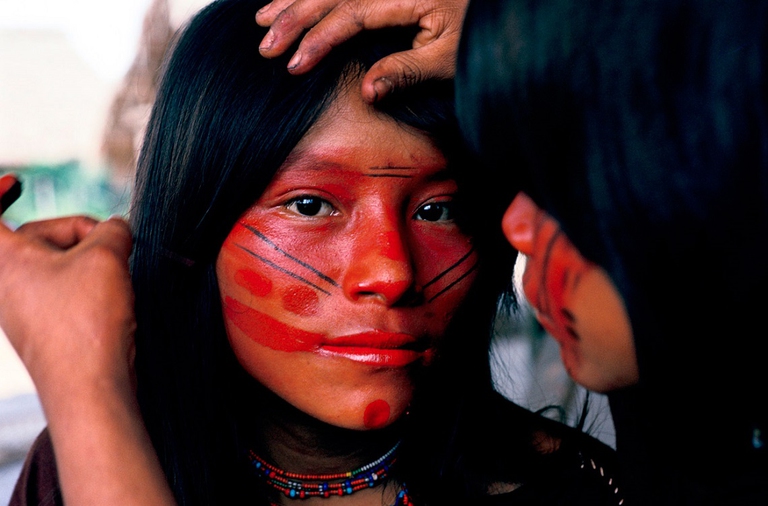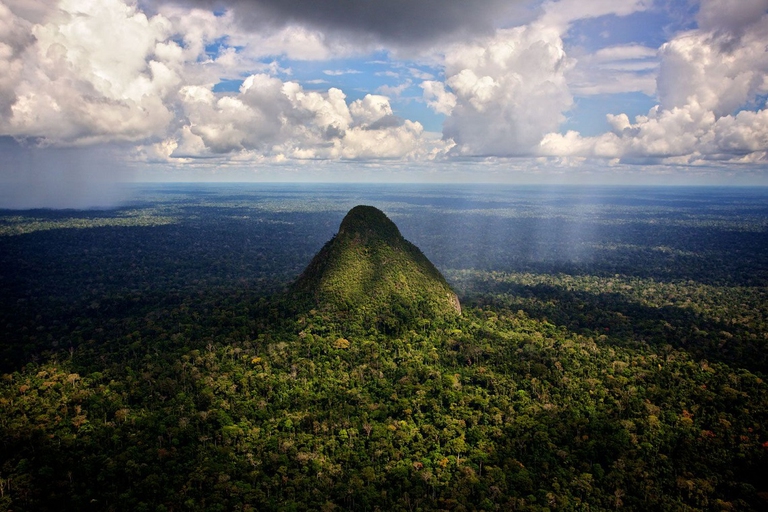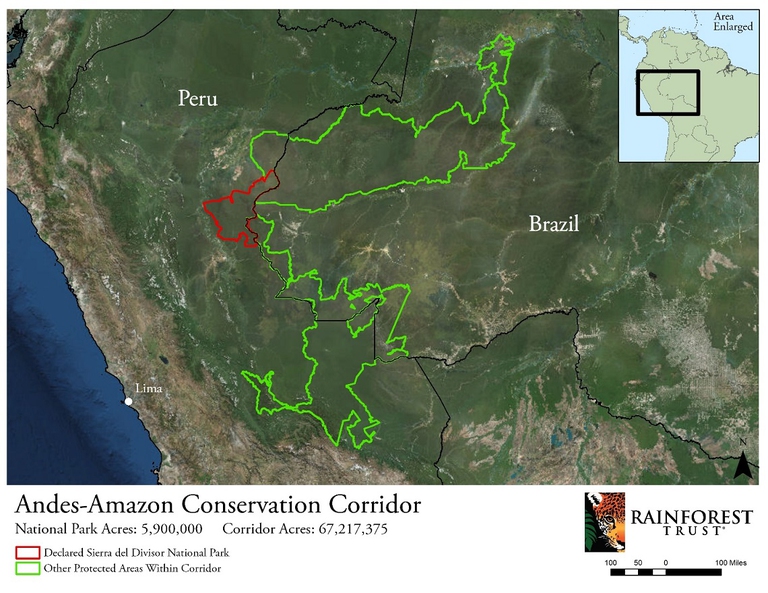
The Amazon became an alternative classroom during the pandemic. Now, the educational forest in Batraja, Bolivia, lives on to teach children and adults the value of nature.
Il Perù ha istituito un nuovo grande parco nazionale per tutelare le tribù indigene e la fauna in via di estinzione.
The Sierra del Divisor, between Peru and Brazil, is one of the remotest areas of South America and the only mountain formation in the Peruvian Amazon forest completely detached from the Andes mountain range. Here, in the thick rainforest, there live different indigenous communities, including some unconnected tribes as well as a number of rare and endangered animal species, like jaguars (Panthera onca), bald uakaris (cacajao calvus) and giant armadillo (Priodontes maximus).
The area is also characterised by amazing geological formations like sleeping volcanoes and it is an important natural wildlife corridor. This natural paradise is threatened by mining and deforestation, but on 8 November the Peruvian government officially established the Sierra del Divisor national park, 1.3 million hectares of forest that are going to be entirely protected.
The new protected area was compared to the Yellowstone national park for its particular geological formations such as “cone” peaks and the sandstone plateaux that form unique ecological niches.
This piece of news, to which everyone has been looking forward for decades, came Friday night in a tweet by the Peruvian Minister of the environment, Manuel Pulgar-Vidal. “The creation of the Sierra del Divisor National Park is a historic event,” Pulgar-Vidal said. “It is a confirmation of the Peruvian government’s commitment to conservation, sustainable development and the fight against climate change”.
It is estimated that the forests of Sierra del Divisor can store about 165 million tonnes of carbon, so, the creation of this park is an important contribution to reduce emissions in view of Paris’ conference on climate.
In the creation of the park were involved tens of partners, from international conservation groups to local indigenous communities. The support of the public opinion was also crucial: according to a survey, 86% of Peruvians backed the creation of the protected area.
“The Sierra del Divisor is the final link in an immense protected area complex that extends from the banks of the Amazon in Brazil to the snowy peaks of the Peruvian Andes,” said Paul Salaman, CEO of Rainforest Trust, one of the associations that fought for the creation of the park. “This permanent conservation corridor is one of the greatest refuges for biodiversity on Earth”.
Siamo anche su WhatsApp. Segui il canale ufficiale LifeGate per restare aggiornata, aggiornato sulle ultime notizie e sulle nostre attività.
![]()
Quest'opera è distribuita con Licenza Creative Commons Attribuzione - Non commerciale - Non opere derivate 4.0 Internazionale.
The Amazon became an alternative classroom during the pandemic. Now, the educational forest in Batraja, Bolivia, lives on to teach children and adults the value of nature.
Our species took its first steps in a world covered in trees. Today, forests offer us sustenance, shelter, and clean the air that we breathe.
Bangladesh suffered widespread damage as a result of Cyclone Amphan. Yet the Sundarbans mangrove forest acted as a natural barrier protecting the country from further destruction, as it has done countless times before.
On top of a 2.4 million dollar compensation, the indigenous Ashaninka people will receive an official apology from the companies who deforested their lands in the 1980s.
The tapir was reintroduced into Brazil’s Atlantic Forest, the country’s most at-risk ecosystem. The species can play a key role in the forest’s recovery.
Forests are home to 80 per cent of the world’s terrestrial biodiversity. This year’s International Day of Forests highlights the urgent changes needed to save them.
After a legal battle that lasted two years, Indonesia’s Supreme Court has revoked the permit to mine for coal in the forests of South Kalimantan in Borneo.
The list of human and animal victims of the Australia wildfires keeps growing – one species might already have gone extinct – as the smoke even reaches South America.
Areas where the FARC guerrilla used to hold power in Colombia have faced record deforestation. Farmers cut down trees, burn land and plant grass for cows. Because, “what else can we do for a living here in the Colombian Amazon”? An intimate report from the heart of the felled forest in Caquetá.










